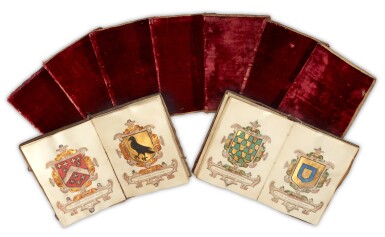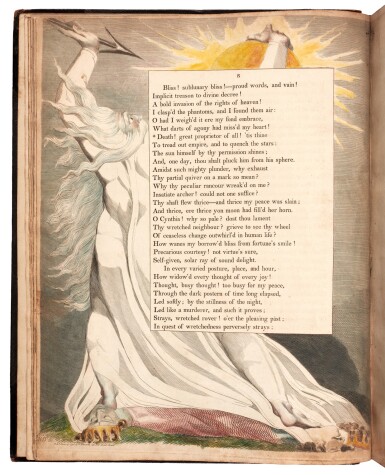The K.C.B. group of three awarded to General Sir W. A. Gib, Madras Staff Corps, Indian Army The Most Honourable Order of the Bath, K.C.B. (Military) Knight Commander’s set of insignia, comprising neck badge, silver-gilt and enamel, hallmarked London 1897, and breast star, silver, silver-gilt and enamel; Indian Mutiny 1857-59, no clasp (Captn. W. A. Gib,); Afghanistan 1878-80, no clasp (Brig. Gen. Wm. Anthony Gib. M.S.C.) the campaign medals both fitted with contemporary silver riband bars, good very fine (4) £3,000-£4,000 Footnote William Anthony Gib was born in Edinburgh on 9 January 1827, the son of Captain Colin Gib, R.N., and Anne Binny. He was privately educated in Classics and Mathematics by William Andrew and Jones of Wanstead, Essex. He was nominated for acceptance into the Madras Infantry by Henry St George Tucker, a Director of the East India Company on 31 December 1842, and passed the qualifying examinations for entry on 25 January 1843. Gib was commissioned Ensign on 4 April 1843 and arrived in the Madras Presidency on 21 July. He was posted to do duty with the 31st Madras Native Infantry and then to the 48th N.I. on 26 January 1844, travelling by sea via the port of Bombay to join his Corps. Later that year he was engaged at the storm and capture of the Fort at Werkera in Khandeish and was shortly afterwards employed in the Concon against the rebel Ragonee-Bungria. On this occasion Lieutenant Gib particularly distinguished himself by attacking and dispersing the whole gang and capturing most of their property and arms with the assistance of only one subadar and five sepoys. In September 1854 he was performing duty with the Sappers and Miners, and, in September, the following year, was Assistant in the Thuggee and Dacoity Department. He was promoted to Captain on 23 November 1856. During the Indian Mutiny he ‘Commanded parties of Police, Regulars and Irregulars on several occasions in the Jubbulpore district in 1858 and 1859, in pursuit of rebels and in the action at Tendukureh’. He became 2nd class Assistant to the Conservator of Forests on 28 September 1860, was promoted to Major on 4 April 1863, and became Interpreter to His Excellency the Commander in Chief on 28 July 1865. Over the course of the next 10 years he held numerous appointments, mostly with the 25th Native Infantry, of which he became second-in-command in January 1874 and Commandant in June 1876. He commanded this regiment in the Expeditionary Force to Malta in 1878. Colonel Gib served during the second campaign in Afghanistan, with the rank of Brigadier-General, first in command of the 3rd Brigade, Reserve Division, at Peshawar, and afterwards, from 13 March, 1880, in command of the 1st Section, Khyber Line Force. He commanded the force in the operations in the Mazina Valley, including the action of Mazina. In May 1880, disturbances in the Mazina Valley erupted following the gathering together of a large body of men caused by the preaching of Jihad by Moolah Ghulam Fakir. The Mazina operations were to suppress disturbances in the Valley and Brigadier General Gib commanded the expedition to affect this purpose, from 18 to 23 May, 1880. The force comprised of 4 guns from L/5 R.A. (Captain B. F. Domville), with the 8th Hussars (135 all ranks under Major H. P. Burke), 5th Bengal Cavalry (110 sabres under Major H. P. Shakespear), H.M. 14th Regiment (Lieutenant-Colonel D. S. Warren) and the 32nd Pioneers (Major H. C. W. Crookshank), and Major W. Coningham, Brigade Major. The primary offensive action occurred during the morning of the 20th May, between 0730 hours and 1300 hours, after which the enemy were in full retreat and the threat neutralised. One native soldier (Brigade Transport) was killed in action, one native soldier missing, one native soldier (32nd Pioneers), was severely wounded, two soldiers from 14th Foot were killed in action, with two men severely wounded and one officer and one man slightly wounded, whilst one officer was severely wound
The K.C.B. group of three awarded to General Sir W. A. Gib, Madras Staff Corps, Indian Army The Most Honourable Order of the Bath, K.C.B. (Military) Knight Commander’s set of insignia, comprising neck badge, silver-gilt and enamel, hallmarked London 1897, and breast star, silver, silver-gilt and enamel; Indian Mutiny 1857-59, no clasp (Captn. W. A. Gib,); Afghanistan 1878-80, no clasp (Brig. Gen. Wm. Anthony Gib. M.S.C.) the campaign medals both fitted with contemporary silver riband bars, good very fine (4) £3,000-£4,000 Footnote William Anthony Gib was born in Edinburgh on 9 January 1827, the son of Captain Colin Gib, R.N., and Anne Binny. He was privately educated in Classics and Mathematics by William Andrew and Jones of Wanstead, Essex. He was nominated for acceptance into the Madras Infantry by Henry St George Tucker, a Director of the East India Company on 31 December 1842, and passed the qualifying examinations for entry on 25 January 1843. Gib was commissioned Ensign on 4 April 1843 and arrived in the Madras Presidency on 21 July. He was posted to do duty with the 31st Madras Native Infantry and then to the 48th N.I. on 26 January 1844, travelling by sea via the port of Bombay to join his Corps. Later that year he was engaged at the storm and capture of the Fort at Werkera in Khandeish and was shortly afterwards employed in the Concon against the rebel Ragonee-Bungria. On this occasion Lieutenant Gib particularly distinguished himself by attacking and dispersing the whole gang and capturing most of their property and arms with the assistance of only one subadar and five sepoys. In September 1854 he was performing duty with the Sappers and Miners, and, in September, the following year, was Assistant in the Thuggee and Dacoity Department. He was promoted to Captain on 23 November 1856. During the Indian Mutiny he ‘Commanded parties of Police, Regulars and Irregulars on several occasions in the Jubbulpore district in 1858 and 1859, in pursuit of rebels and in the action at Tendukureh’. He became 2nd class Assistant to the Conservator of Forests on 28 September 1860, was promoted to Major on 4 April 1863, and became Interpreter to His Excellency the Commander in Chief on 28 July 1865. Over the course of the next 10 years he held numerous appointments, mostly with the 25th Native Infantry, of which he became second-in-command in January 1874 and Commandant in June 1876. He commanded this regiment in the Expeditionary Force to Malta in 1878. Colonel Gib served during the second campaign in Afghanistan, with the rank of Brigadier-General, first in command of the 3rd Brigade, Reserve Division, at Peshawar, and afterwards, from 13 March, 1880, in command of the 1st Section, Khyber Line Force. He commanded the force in the operations in the Mazina Valley, including the action of Mazina. In May 1880, disturbances in the Mazina Valley erupted following the gathering together of a large body of men caused by the preaching of Jihad by Moolah Ghulam Fakir. The Mazina operations were to suppress disturbances in the Valley and Brigadier General Gib commanded the expedition to affect this purpose, from 18 to 23 May, 1880. The force comprised of 4 guns from L/5 R.A. (Captain B. F. Domville), with the 8th Hussars (135 all ranks under Major H. P. Burke), 5th Bengal Cavalry (110 sabres under Major H. P. Shakespear), H.M. 14th Regiment (Lieutenant-Colonel D. S. Warren) and the 32nd Pioneers (Major H. C. W. Crookshank), and Major W. Coningham, Brigade Major. The primary offensive action occurred during the morning of the 20th May, between 0730 hours and 1300 hours, after which the enemy were in full retreat and the threat neutralised. One native soldier (Brigade Transport) was killed in action, one native soldier missing, one native soldier (32nd Pioneers), was severely wounded, two soldiers from 14th Foot were killed in action, with two men severely wounded and one officer and one man slightly wounded, whilst one officer was severely wound





.jpg)









Try LotSearch and its premium features for 7 days - without any costs!
Be notified automatically about new items in upcoming auctions.
Create an alert